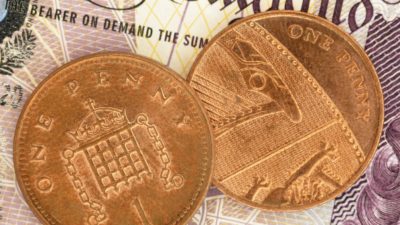A lot of people like the idea of passive income but do not make moves to start earning it. I think an ISA can provide passive income streams not only now, but hopefully long into the future. Indeed, if I invest today in a wide variety of income shares and hold them, hopefully I can earn dividend income for decades to come.
Here is how I would invest £20,000 in a Stocks and Shares ISA before next month’s annual deadline, aiming to generate passive income for life.
Yield and passive income
The concept of dividend yield is important when it comes to passive income. The longer the time period, the more important it becomes. Here is why.
Passive income stocks: our picks
Do you like the idea of dividend income?
The prospect of investing in a company just once, then sitting back and watching as it potentially pays a dividend out over and over?
If you’re excited by the thought of regular passive income payments, as well as the potential for significant growth on your initial investment…
Then we think you’ll want to see this report inside Motley Fool Share Advisor — ‘5 Essential Stocks For Passive Income Seekers’.
What’s more, today we’re giving away one of these stock picks, absolutely free!
Yield is the dividend income I expect each year from a share, expressed as a percentage of the purchase price. So, for example, currently the yield on BP is 4.4%. That means that if I invested £1,000 into BP shares, I would expect to earn around £44 in dividends nest year.
In practice, that might not happen. BP could raise its dividend, giving me more dividend income. It could also cut its dividend. But right now the yield is 4.4%, so that is what I would expect to get from buying BP shares today. Compare that to competitor Shell. Its yield is 3.3%. That does not sound very different to BP – over a year, investing £1,000 should only earn me £11 less passive income than putting the money into rival BP.
But what about the next 10 years? The difference from the two yields for a £1,000 investment would be £110. Over 20 years, it would be £220. That is if I invest £1,000. If I invested all of my £20,000 into shares with the same yield as Shell, my projected dividend income over the next 20 years would be £4,400 lower than if I invested in shares with an average yield at BP’s level.
Managing risks
So, to try and set up passive income streams for life, I would earn more if I owned higher yielding shares. But that is only part of the story. Today’s yield is no guarantee of future dividend. Maybe BP’s higher yield reflects concerns that a fire sale of its Russian assets could hurt future profitability — and its dividend. A lower oil price might hurt profits at both companies.
Therefore, I do not just focus on yield when assessing dividend companies I could buy for my ISA. Instead, I try to choose businesses with a sustainable competitive advantage that I think could help them sustain or grow profits over time for years to come. I also reduce my risk by spreading the £20,000 across a diversified group of companies operating in different business areas. Specifically, I would invest £2,000 into each of 10 companies.
UK dividend shares to buy now
I would start in the financial services sector. Investment manager M&G reported its annual results this week, which included a small dividend raise. That means that the company now offers a yield of 8.3%. The results showed a small inflow in funds. One of the risks of a company like M&G is that clients withdraw funds, for example due to weak performance, leading to revenues and profits falling. So I was pleased to see the inflow. I think the company’s strong brand could help it continue to attract and retain customers.
The same is true for insurer and financial services provider Legal & General with its multi-coloured umbrella. The company yields 6.9% currently and has set out plans to keep growing its dividend in coming years. But one risk is the impact of insurance pricing rules introduced this year. That might push down profit margins.
Tobacco giants
I would also invest in the two main UK tobacco companies, British American Tobacco and Imperial Brands. They yield 6.9% and 9.0% respectively.
Tobacco generates large cash flows, which can be used to fund dividends. Declining cigarette usage in many developed markets could hurt both companies. Revenues could fall and, although pricing increases may offset some risk, ultimately I think profits could also decline.
The companies are reacting in different ways: British American is spending heavily to build its non-cigarette range of tobacco products, while Imperial is trying to grow market share in its key cigarette markets. I think the risks are reflected in the yields and hold both shares in my ISA.
Consumer goods
Recent price falls have meant some consumer goods companies offer yields I find attractive.
For example, Marmite and Dove owner Unilever yields 4.3% following a 13% share price fall in the past year. The business faces challenges, such as cost price inflation that could hurt profit margins. But its portfolio of premium brands gives it pricing power. I think many of its products, such as shampoo and cleaning products, should benefit from resilient demand.
I would also consider putting £2,000 into drinks maker Diageo. The yield here is a smaller 2.2% But the Guinness brewer has a very cash generative business model. That has enabled it to raise its dividend annually for over three decades, one of a small number of UK shares to do so. Diageo also could see cost inflation eating into profit margins and faces risks to revenues from an increase in the percentage of young people who shun alcohol. But I like its portfolio of premium brands and its strong potential for future income growth.
Utilities and telecoms
I would also consider investing some of my ISA in Vodafone. The telecoms operator yields 6.4%. It does have a lot of debt and needs to keep investing large amounts in capital expenditure to keep its networks up to date. That could hurt profits. On the other hand, it has a huge customer base and well-established brand that could help it generate substantial earnings in future.
Another pick for my ISA is electricity network operator National Grid. The company typically raises its dividend annually and currently yields 4.4%. Like Vodafone, the costs of keeping a large infrastructure network up to date could eat into profits. But the company has a strong market position. It should keep benefiting from robust customer demand.
Passive income from high yielders
I would also buy the venture capital trust Income & Growth for my ISA, with its 10% yield. It owns stakes in a variety of early stage companies. If they fare badly, the trust’s income will fall. But its track record of choosing companies is good and the double-digit yield attracts me.
Finally, I would invest in housebuilder Persimmon. It yields 10.9%. Dividend coverage is weak, so a fall in the housing market could hurt profits and endanger the dividend. But I think the high yield already reflects that risk.







